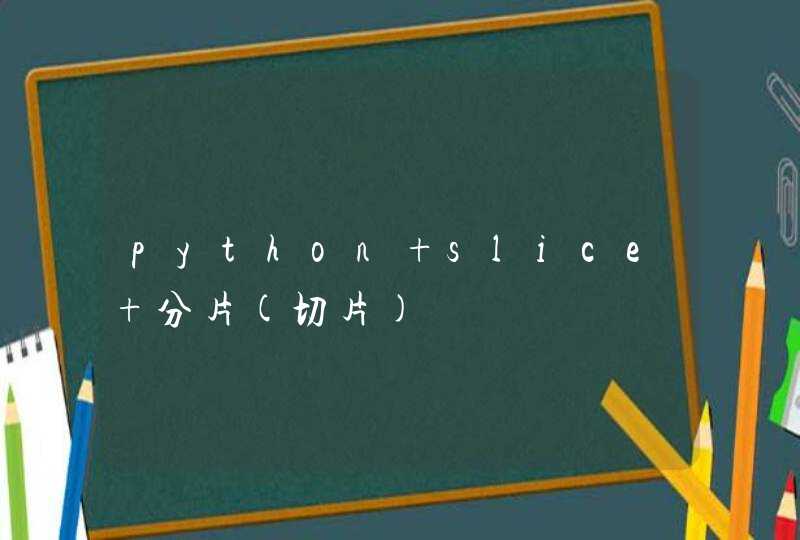
C语言中没有预置的sort函数。如果在C语言中,遇到有调用sort函数,就是自定义的一个函数,功能一般用于排序。
一、可以编写自己的sort函数。
如下函数为将整型数组从小到大排序。
void sort(int *a, int l)//a为数组地址,l为数组长度。
{
int i, j
int v
//排序主体
for(i = 0 i < l - 1 i ++)
for(j = i+1 j < l j ++)
{
if(a[i] > a[j])//如前面的比后面的大,则交换。
{
v = a[i]
a[i] = a[j]
a[j] = v
}
}}对于这样的自定义sort函数,可以按照定义的规范来调用。
二、C语言有自有的qsort函数。
功 能: 使用快速排序例程进行排序
头文件:stdlib.h
原型: void qsort(void *base,int nelem,int width,int (*fcmp)(const void *,const void *))
参数:
1 待排序数组首地址
2 数组中待排序元素数量
3 各元素的占用空间大小
4 指向函数的指针,用于确定排序的顺序
这个函数必须要自己写比较函数,即使要排序的元素是int,float一类的C语言基础类型。
以下是qsort的一个例子:
#include<stdio.h>
#include<stdlib.h>
int comp(const void*a,const void*b)//用来做比较的函数。
{
return *(int*)a-*(int*)b
}
int main()
{
int a[10] = {2,4,1,5,5,3,7,4,1,5}//乱序的数组。
int i
qsort(a,n,sizeof(int),comp)//调用qsort排序
for(i=0i<10i++)//输出排序后的数组
{
printf("%d\t",array[i])
}
return 0
}
扩展资料:
sort函数的用法(C++排序库函数的调用)
对数组进行排序,在c++中有库函数帮我们实现,这们就不需要我们自己来编程进行排序了。
(一)为什么要用c++标准库里的排序函数
Sort()函数是c++一种排序方法之一,学会了这种方法也打消我学习c++以来使用的冒泡排序和选择排序所带来的执行效率不高的问题!因为它使用的排序方法是类似于快排的方法,时间复杂度为n*log2(n),执行效率较高!
(二)c++标准库里的排序函数的使用方法
I)Sort函数包含在头文件为#include<algorithm>的c++标准库中,调用标准库里的排序方法可以不必知道其内部是如何实现的,只要出现我们想要的结果即可!
II)Sort函数有三个参数:
(1)第一个是要排序的数组的起始地址。
(2)第二个是结束的地址(最后一位要排序的地址的下一地址)
(3)第三个参数是排序的方法,可以是从大到小也可是从小到大,还可以不写第三个参数,此时默认的排序方法是从小到大排序。
Sort函数使用模板:
Sort(start,end,排序方法)
下面就具体使用sort()函数结合对数组里的十个数进行排序做一个说明!
例一:sort函数没有第三个参数,实现的是从小到大
#include<iostream>
#include<algorithm>
using namespace std
int main()
{
int a[10]={9,6,3,8,5,2,7,4,1,0}
for(int i=0i<10i++)
cout<<a[i]<<endl
sort(a,a+11)
for(int i=0i<10i++)
cout<<a[i]<<endl
return 0
}
编译器
GCC,GNU组织开发的开源免费的编译器
MinGW,Windows操作系统下的GCC
Clang,开源的BSD协议的基于LLVM的编译器
Visual C++ :: cl.exe,Microsoft VC++自带的编译器
集成开发环境
CodeBlocks,开源免费的C/C++ IDE
CodeLite,开源、跨平台的C/C++集成开发环境
Orwell Dev-C++,可移植的C/C++IDE
C-Free
Light Table
Visual Studio系列
Hello World
参考资料:百度百科-sort函数
c语言的学习很多是比较复杂的,那么c语言中sort的用法的用法你知道吗?下面我就跟你们详细介绍下c语言中sort的用法的用法,希望对你们有用。
c语言中sort的用法的用法
sort是STL中提供的算法,头文件为#include<algorithm>以及using namespace std函数原型如下:
?
1
2
3
4
5
template <class RandomAccessIterator>
void sort ( RandomAccessIterator first, RandomAccessIterator last )
template <class RandomAccessIterator, class Compare>
void sort ( RandomAccessIterator first, RandomAccessIterator last, Compare comp )
使用第一个版本是对[first,last)进行升序排序,默认操作符为"<",第二个版本使用comp函数进行排序控制,comp包含两个在[first,last)中对应的值,如果使用"<"则为升序排序,如果使用">"则为降序排序,分别对int、float、char以及结构体排序例子如下:
?
1
2
3
4
5
6
7
8
9
10
11
12
13
14
15
16
17
18
19
20
21
22
23
24
25
26
27
28
29
30
31
32
33
34
35
36
37
38
39
40
41
42
43
44
45
46
47
48
49
50
51
52
53
54
55
56
57
58
59
60
61
62
63
64
65
66
67
68
69
70
71
#include<stdio.h>
#include<algorithm>
#include<string>
using namespace std
struct product{
char name[16]
float price
}
int array_int[5]={4,1,2,5,3}
char array_char[5]={'a','c','b','e','d'}
double array_double[5]={1.2,2.3,5.2,4.6,3.5}
//结构比较函数(按照结构中的浮点数值进行排序)
bool compare_struct_float(const product &a,const product &b){
return a.price<b.price
}
//结构比较函数(按照结构中的字符串进行排序)
bool compare_struct_str(const product &a,const product &b){
return string(a.name)<string(b.name)
}
//打印函数
void print_int(const int* a,int length){
printf("升序排序后的int数组:\n")
for(int i=0i<length-1i++)
printf("%d ",a[i])
printf("%d\n",a[length-1])
}
void print_char(const char* a,int length){
printf("升序排序后的char数组:\n")
for(int i=0i<length-1i++)
printf("%c ",a[i])
printf("%c\n",a[length-1])
}
void print_double(const double* a,int length){
printf("升序排序后的dobule数组:\n")
for(int i=0i<length-1i++)
printf("%.2f ",a[i])
printf("%.2f\n",a[length-1])
}
void print_struct_array(struct product *array, int length)
{
for(int i=0i<lengthi++)
printf("[ name: %s \t price: $%.2f ]\n", array[i].name, array[i].price)
puts("--")
}
void main()
{
struct product structs[] = {{"mp3 player", 299.0f}, {"plasma tv", 2200.0f},
{"notebook", 1300.0f}, {"smartphone", 499.99f},
{"dvd player", 150.0f}, {"matches", 0.2f }}
//整数排序
sort(array_int,array_int+5)
print_int(array_int,5)
//字符排序
sort(array_char,array_char+5)
print_char(array_char,5)
//浮点排序
sort(array_double,array_double+5)
print_double(array_double,5)
//结构中浮点排序
int len = sizeof(structs)/sizeof(struct product)
sort(structs,structs+len,compare_struct_float)
printf("按结构中float升序排序后的struct数组:\n")
print_struct_array(structs, len)
//结构中字符串排序
sort(structs,structs+len,compare_struct_str)
printf("按结构中字符串升序排序后的struct数组:\n")
print_struct_array(structs, len)
}
sort函数的用法做ACM题的时候,排序是一种经常要用到的操作。如果每次都自己写个冒泡之类的O(n^2)排序,不但程序容易超时,而且浪费宝贵的比赛时间,还很有可能写错。STL里面有个sort函数,可以直接对数组排序,复杂度为n*log2(n)。使用这个函数,需要包含头文件。
这个函数可以传两个参数或三个参数。第一个参数是要排序的区间首地址,第二个参数是区间尾地址的下一地址。也就是说,排序的区间是[a,b)。简单来说,有一个数组int a[100],要对从a[0]到a[99]的元素进行排序,只要写sort(a,a+100)就行了,默认的排序方式是升序。
拿我出的“AC的策略”这题来说,需要对数组t的第0到len-1的元素排序,就写sort(t,t+len)
对向量v排序也差不多,sort(v.begin(),v.end())
排序的数据类型不局限于整数,只要是定义了小于运算的类型都可以,比如字符串类string。
如果是没有定义小于运算的数据类型,或者想改变排序的顺序,就要用到第三参数——比较函数。比较函数是一个自己定义的函数,返回值是bool型,它规定了什么样的关系才是“小于”。想把刚才的整数数组按降序排列,可以先定义一个比较函数cmp
?
1
2
3
4
bool cmp(int a,int b)
{
return a>b
}
排序的时候就写sort(a,a+100,cmp)
假设自己定义了一个结构体node
?
1
2
3
4
5
struct node{
int a
int b
double c
}
有一个node类型的数组node arr[100],想对它进行排序:先按a值升序排列,如果a值相同,再按b值降序排列,如果b还相同,就按c降序排列。就可以写这样一个比较函数:
以下是代码片段:
?
1
2
3
4
5
6
bool cmp(node x,node y)
{
if(x.a!=y.a) return x.a
if(x.b!=y.b) return x.b>y.b
return return x.c>y.c
}
排序时写sort(arr,a+100,cmp)
?
1
2
3
4
5
qsort(s[0],n,sizeof(s[0]),cmp)
int cmp(const void *a,const void *b)
{
return *(int *)a-*(int *)b
}
sort函数的用法:对int类型数组排序?
1
2
3
4
5
6
7
int num[100]
Sample:
int cmp ( const void *a , const void *b )
{
return *(int *)a - *(int *)b
}
qsort(num,100,sizeof(num[0]),cmp)
sort函数的用法:对char类型数组排序(同int类型)?
1
2
3
4
5
6
7
char word[100]
Sample:
int cmp( const void *a , const void *b )
{
return *(char *)a - *(int *)b
}
qsort(word,100,sizeof(word[0]),cmp)
sort函数的用法:对double类型数组排序(特别要注意)?
1
2
3
4
5
6
double in[100]
int cmp( const void *a , const void *b )
{
return *(double *)a >*(double *)b ? 1 : -1
}
qsort(in,100,sizeof(in[0]),cmp);
sort函数的用法:对结构体一级排序?
1
2
3
4
5
6
7
8
9
10
11
struct In
{
double data
int other
}s[100]
//按照data的值从小到大将结构体排序,关于结构体内的排序关键数据data的类型可以很多种,参考上面的例子写
int cmp( const void *a ,const void *b)
{
return ((In *)a)->data - ((In *)b)->data
}
qsort(s,100,sizeof(s[0]),cmp)
sort函数的用法:对结构体?
1
2
3
4
5
6
7
8
9
10
11
12
13
14
struct In
{
int x
int y
}s[100]
//按照x从小到大排序,当x相等时按照y从大到小排序
int cmp( const void *a , const void *b )
{
struct In *c = (In *)a
struct In *d = (In *)b
if(c->x != d->x) return c->x - d->x
else return d->y - c->y
}
qsort(s,100,sizeof(s[0]),cmp)
sort函数的用法:对字符串进行排序?
1
2
3
4
5
6
7
8
9
10
11
struct In
{
int data
char str[100]
}s[100]
//按照结构体中字符串str的字典顺序排序
int cmp ( const void *a , const void *b )
{
return strcmp( ((In *)a)->str , ((In *)b)->str )
}
qsort(s,100,sizeof(s[0]),cmp)
sort函数的用法:计算几何中求凸包的cmp?
1
2
3
4
5
6
7
8
9
int cmp(const void *a,const void *b) //重点cmp函数,把除了1点外的所有点,旋转角度排序
{
struct point *c=(point *)a
struct point *d=(point *)b
if( calc(*c,*d,p[1]) <0) return 1
else if( !calc(*c,*d,p[1]) &&dis(c->x,c->y,p[1].x,p[1].y) <dis(d->x,d->y,p[1].x,p[1].y)) //如果在一条直线上,则把远的放在前面
return 1
else return -1
}
猜你喜欢:
1. c中的用法
2. c语言中逻辑或的用法
3. c语言strcmp的用法
4. c语言中free的用法
5. c语言pow的用法
6. c语言中putchar的用法
c语言中sort,表示对给定区间所有元素进行排序。C语言是一门面向过程的计算机编程语言,与C++、Java等面向对象编程语言有所不同。C语言的设计目标是提供一种能以简易的方式编译、处理低级存储器。

































































